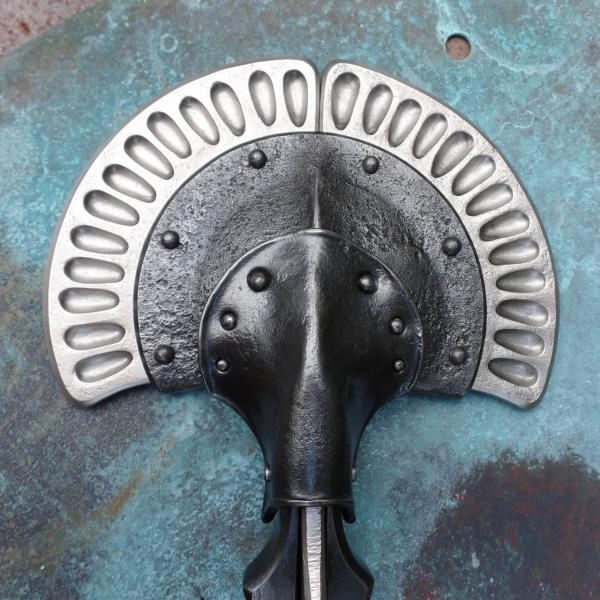In my studio, traditional forms of furniture and functional metalwork evolve into new anatomies, drawn from the world around me, both natural and man-made, and expressed in the language of the blacksmith.
About the Artist
Chris Shea designs and creates furniture, sculpture, and architectural metalwork at his studio in Brandywine, MD. His work is included in the permanent collection of the Smithsonian American Art Museum's Renwick Gallery and in numerous private collections. Chris's work has also been shown at Fuller Craft Museum in Brockton, MA, Woodson Art Museum, Houston Center for Contemporary Craft, the National Ornamental Metals Museum, Wexler Gallery in Philadelphia, and at SOFA Chicago with Maurine Littleton Gallery. Shea has studied at the Appalachian Center for Craft in Tennessee and at Penland School. He holds a BA in English from Cornell University. Chris has served on the board of directors of the James Renwick Alliance and has received grants from the Maryland State Arts Council in 2015 and 2021. Chris Shea's glass work is created in association with the Washington Glass Studio.Artist's Statement
Growing up in a historic town on the coast of Massachusetts, I received an early education in the eloquence of even simple things. Objects were saturated with history. Colonial-era homes and household things -- a chair, a cooking spoon, an artisan's tool -- held traces of the people who had made them and used them. Some objects were spare and utilitarian, others were grand and beautifully crafted. All of them had the capacity to evoke a sense of wonder and connectedness. To those objects, I can trace my beginnings as a blacksmith and a furniture maker, though it took me 30 years and a detour through literary aspirations to find my path. From the woods and shorelines of my childhood, I developed an admiration for insects, crustaceans, and other creatures that has never left me. And since I first began to explore my chosen materials of iron, bronze, and copper an affinity between the weird exoskeletal beauties that I wondered at as a child and the languages of forged metalwork has been inescapable. The material and technical vocabulary that metalsmiths have developed over time to address challenges of form and function seems to me to have intriguing echoes in the ways that evolution has, for certain creatures, worked to solve the practical problems of living on Earth. In both cases, strange and elegant solutions have arisen. The visceral sense of wonder I feel in contemplating the long workings of evolution and its spectacular, varied results is echoed in my own work with fire, hammer, and anvil. In my studio, traditional forms of furniture and functional metalwork evolve into new anatomies, drawn from the world around me, both natural and man-made, and expressed in the language of the blacksmith.Featured Work
Photos
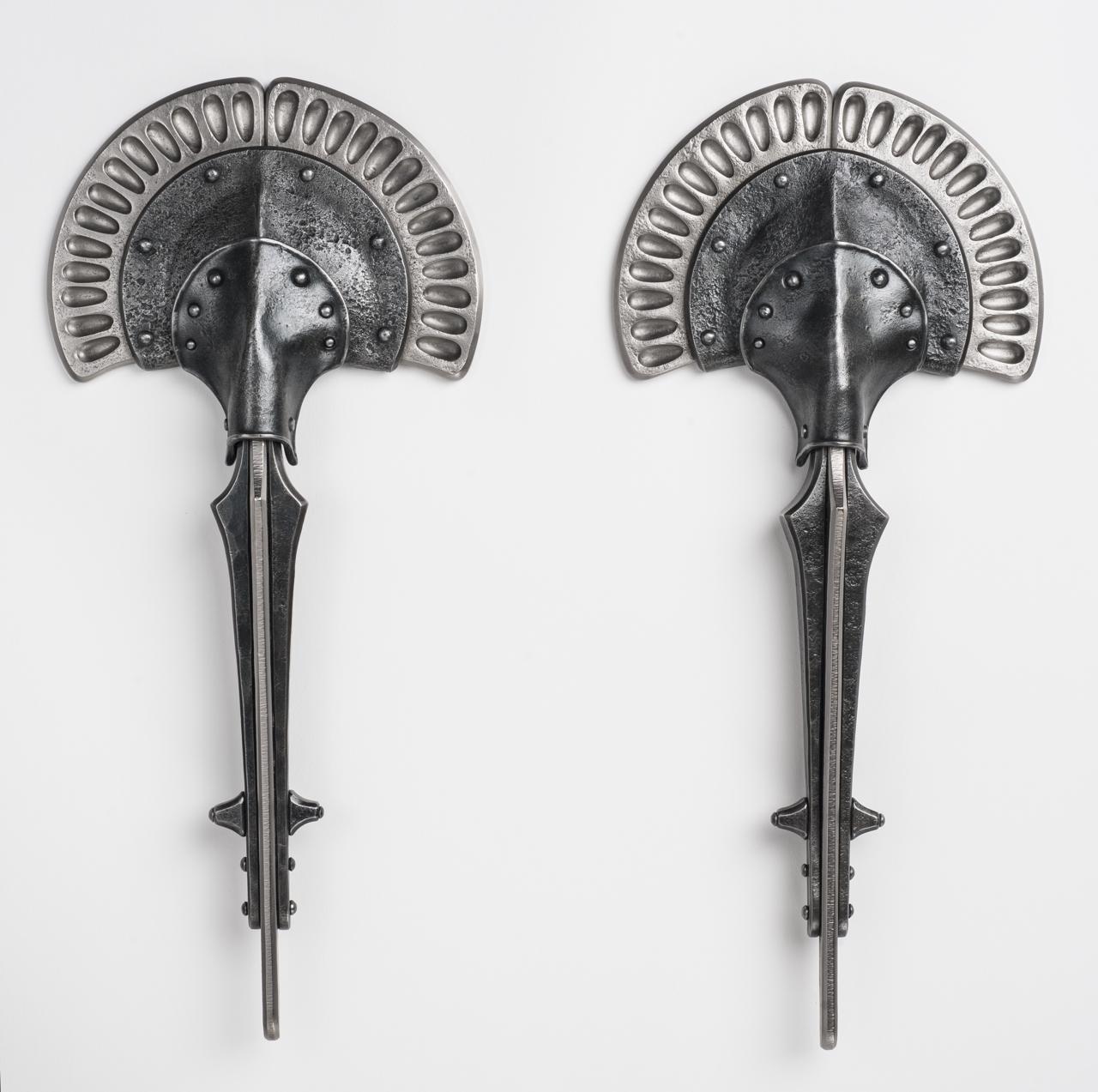
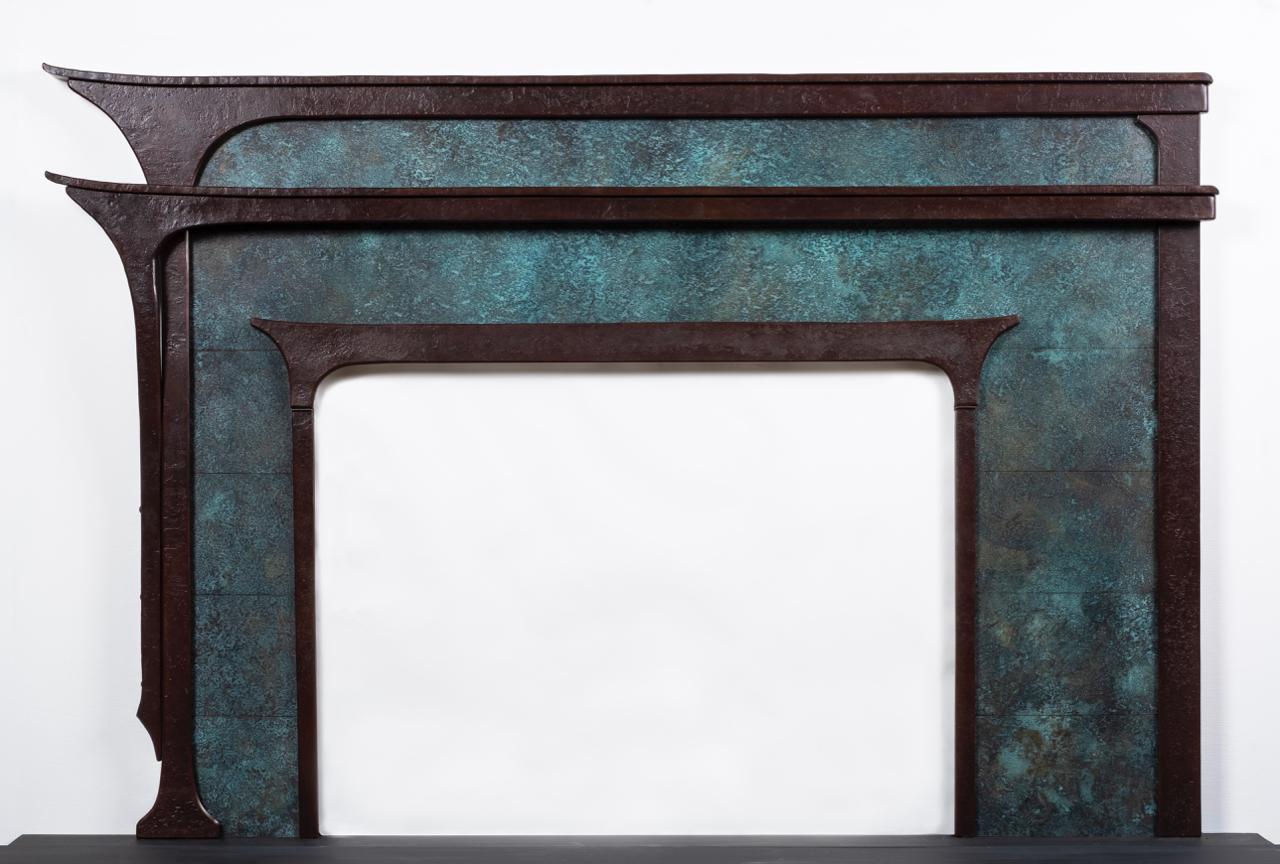
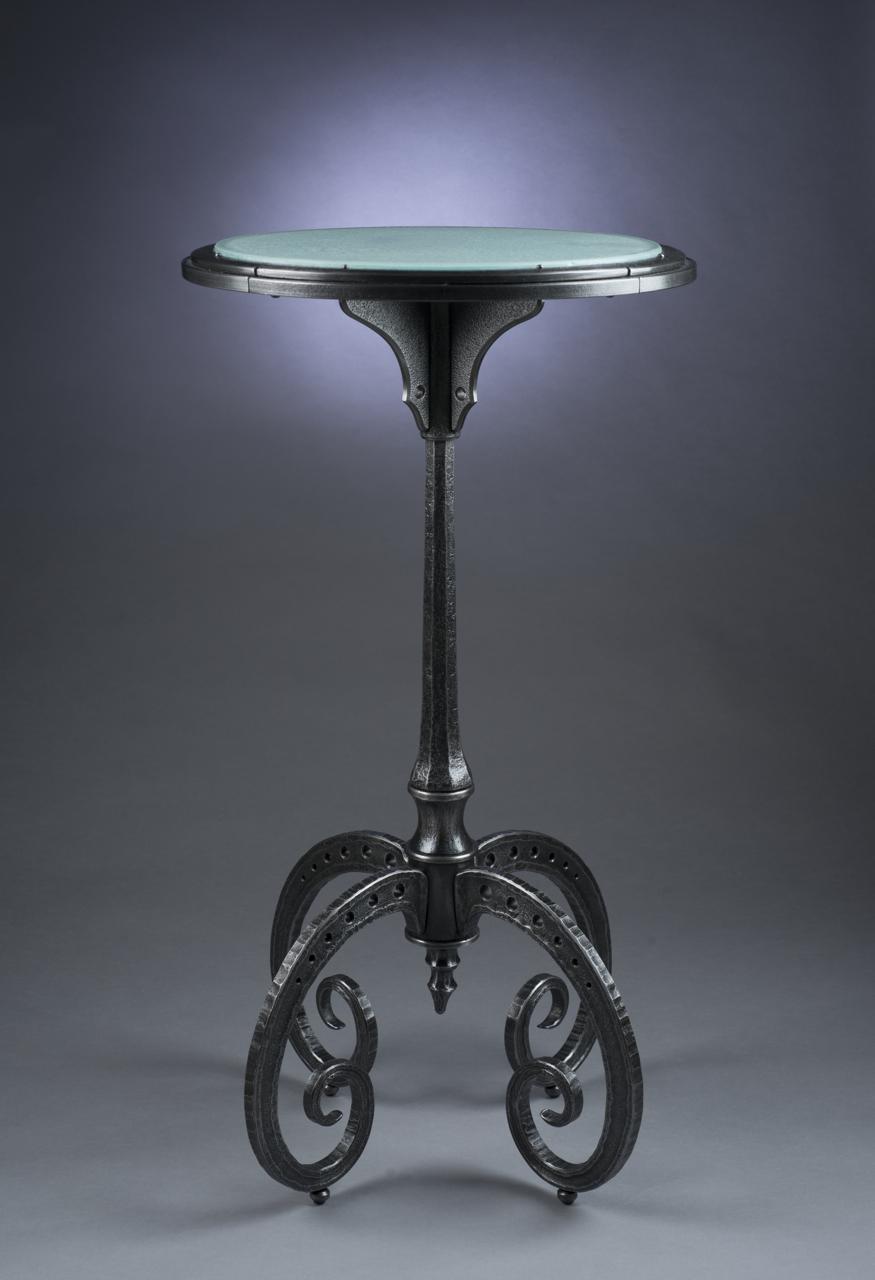

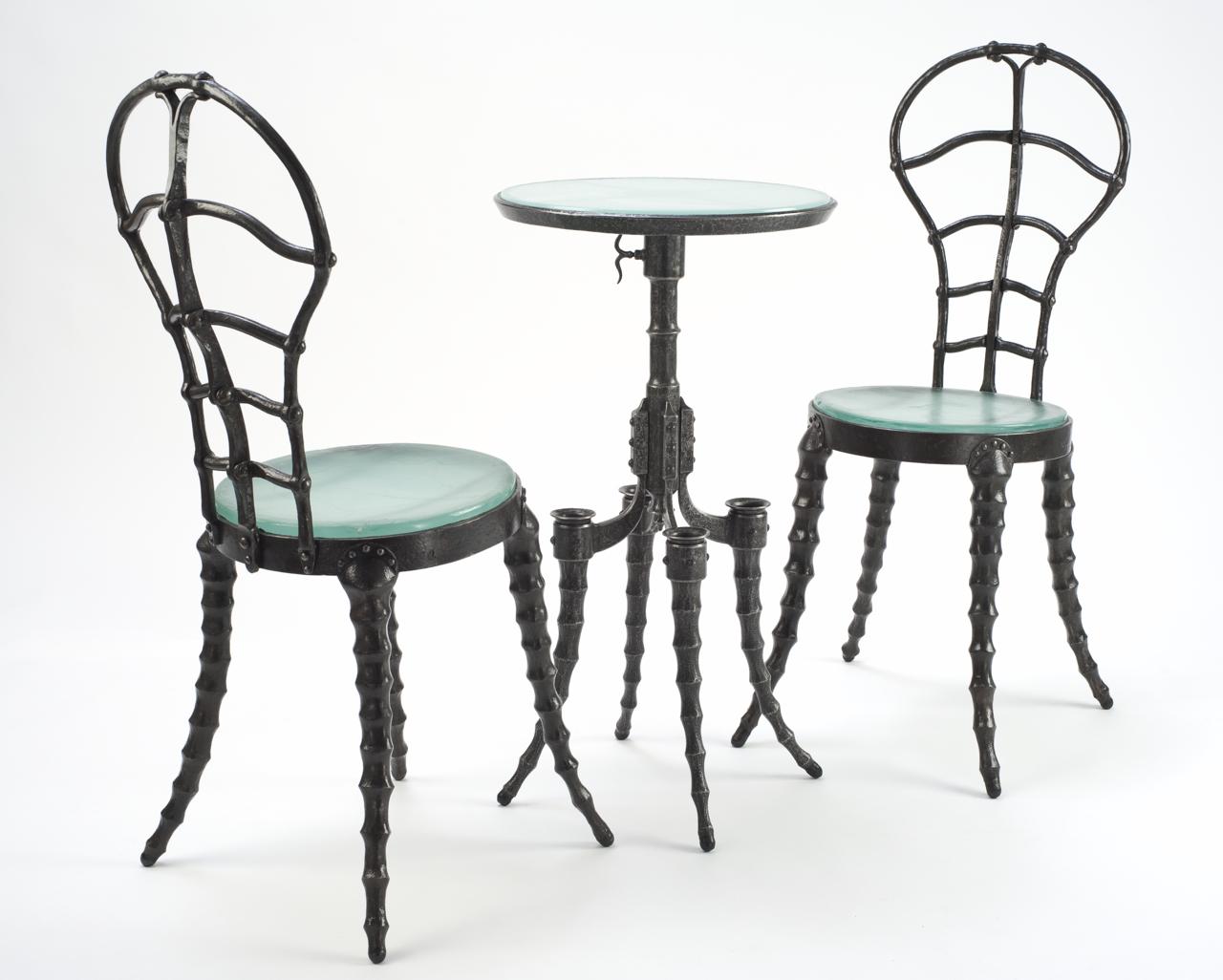
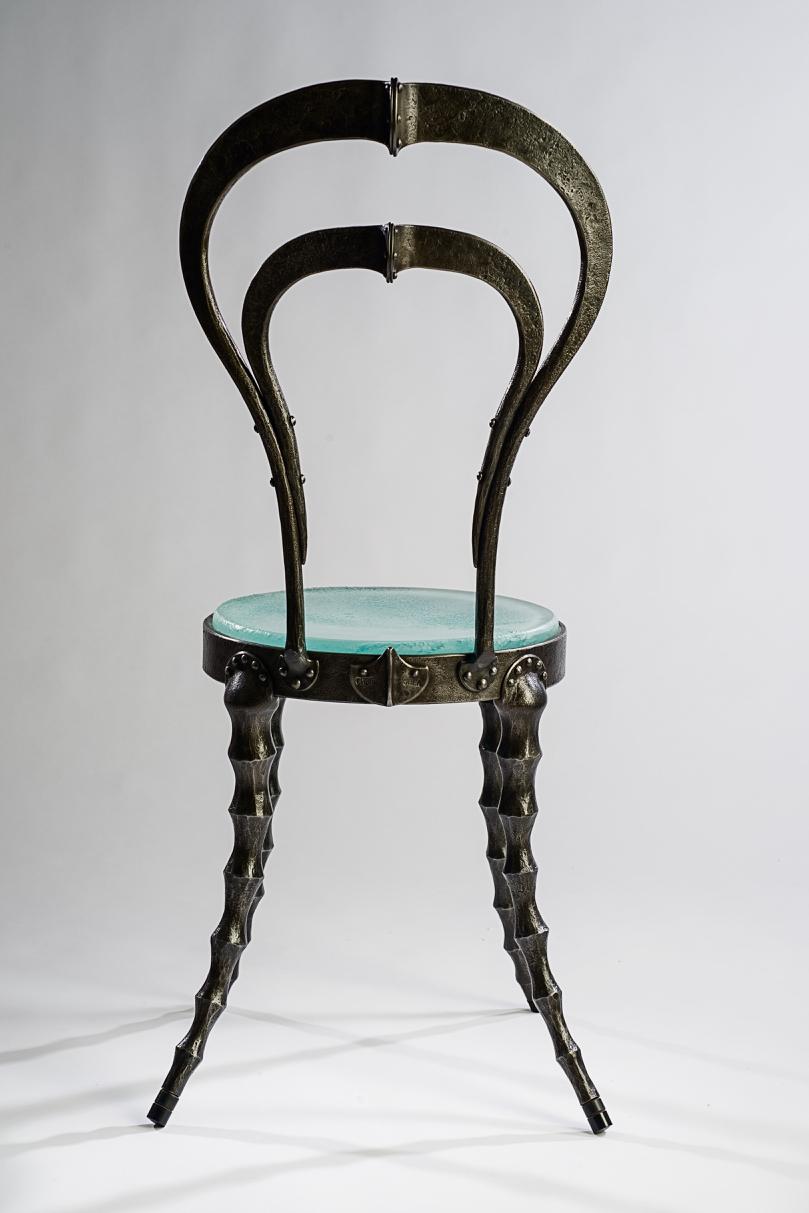
Featured Work: Photos
Limulous Door Knockers
forged steel, monel (nickel/copper alloy)
2015
Functional door knockers created for a private residence
Fireplace Mantel
forged steel, bronze
2020
This piece is a sculptural fireplace mantel commissioned for a private residence in Maryland. Inquiries are welcome about new commissions for architectural metalwork and furniture.
Urchin Pedestal table
forged steel, cast glass
2016
Functional table in forged iron and cast glass. Inquiries are welcome about commissions for this design and any others.
Embassy Row Grille
forged steel
2012
Iron grille and sidelights created for former embassy turned private residence in Washington, DC. Inquiries are welcome about new architectural commissions.
Renwick Set: Cafe Chairs & Arthropod Side Table
forged steel, cast glass
2011
Functional table and chairs in forged steel and cast glass. Permanent collection, Smithsonian American Art Museum's Renwick Gallery. Inquiries are welcome about commissions for this design and any others.
Scapularis Chair
forged steel, cast glass
2015
This piece is a functional chair created in forged steel and cast glass. Inquiries are welcome about commissions for this design and any others.

